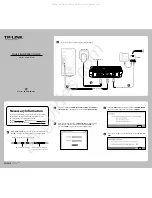
G.3
Writing Scripts
Writing Scripts
www.ti.com
A script is simply a text file that contains data to send to the serial control buses. The scripting language is
simple, as is the parser for the language. Therefore, although the program is not forgiving about mistakes
made in the source script file, the formatting of the file is simple. Consequently, mistakes are rare.
Each line in a script file is one command. Lines cannot be extended beyond one line. A line is terminated
by a carriage return.
The first character of a line is the command. Commands are:
I
Set interface bus to use
r
Read from the serial control bus
w
Write to the serial control bus
#
Comment
b
Break
d
Delay
The first command,
I
, sets the interface to use for the commands to follow. This command must be
followed by one of the following parameters:
i2cstd
Standard mode I
2
C bus
i2cfast
Fast mode I
2
C bus
spi8
SPI bus with 8-bit register addressing
spi16
SPI bus with 16-bit register addressing
gpio
Use the USB-MODEVM GPIO capability
For example, if a fast mode I
2
C bus is to be used, the script begins with:
I i2cfast
No data follows the break command. Anything following a comment command is ignored by the parser,
provided that it is on the same line. The delay command allows the user to specify a time, in milliseconds,
that the script pauses before proceeding.
Note:
Unlike all other numbers used in the script commands, the delay time is entered in a decimal
format. Also, note that because of latency in the USB bus as well as the time it takes the
processor on the USB-MODEVM to handle requests, the delay time may not be precise.
A series of byte values follows either a read or write command. Each byte value is expressed in
hexadecimal, and each byte must be separated by a space. Commands are interpreted and sent to the
TAS1020 by the program using the protocol described in
Section G.1
.
The first byte following a read or write command is the I
2
C slave address of the device (if I
2
C is used) or
the first data byte to write (if SPI is used—note that SPI interfaces are not standardized on protocols, so
the meaning of this byte varies with the device being addressed on the SPI bus). The second byte is the
starting register address that data is written to (again, with I
2
C; SPI varies—see
Section G.1
for additional
information about what variations may be necessary for a particular SPI mode). Following these two bytes
are data, if writing; if reading, the third byte value is the number of bytes to read, (expressed in
hexadecimal).
For example, to write the values 0xAA 0x55 to an I
2
C device with a slave address of 0x90, starting at a
register address of 0x03, one would write:
#example script
I i2cfast
w 90 03 AA 55
r 90 03 2
50
USB-MODEVM Protocol
SLAU261 – November 2008
Submit Documentation Feedback




































